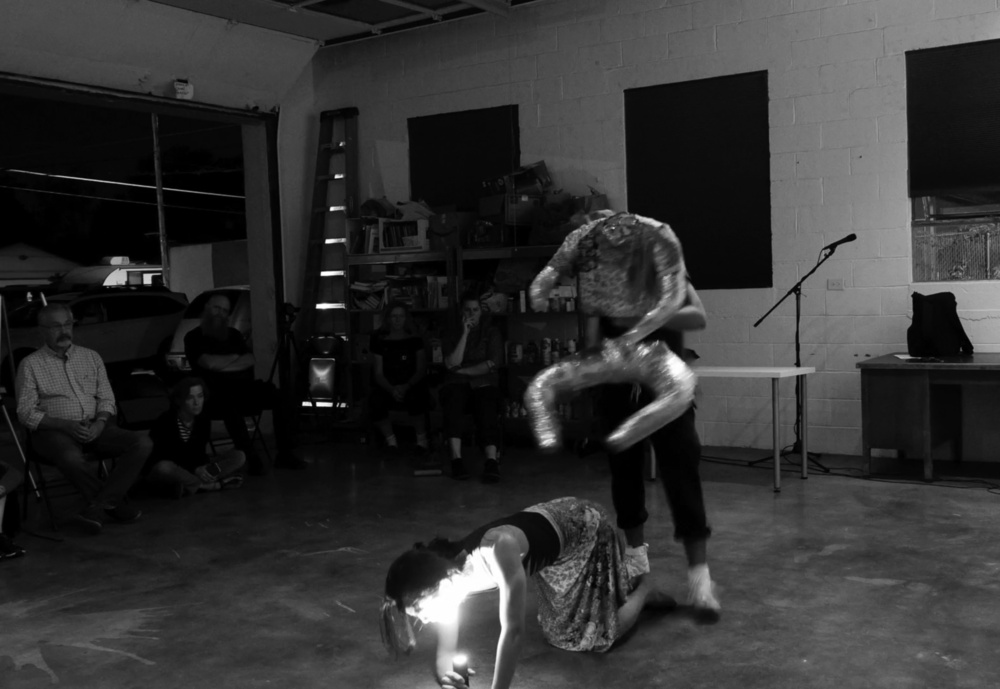
THE PRESENTATION IS A PRESENTATION OF A PRESENTATION, PT. 1 : ST/ITCH
first performed on September 25, 2019
Counterpath Press for The Unseen Festival 2019, Denver, CO
performed once in 2019
Elle Hong
Cipriano Ortega, Chase Morimoto
Boulder, CO
206604214e206604214l206604214l206604214e206604214h206604214o206604214n206604214g206604214.206604214a206604214r206604214t206604214@206604214g206604214m206604214a206604214i206604214l206604214.206604214c206604214o206604214m
ellehong.com
THE PRESENTATION IS A PRESENTATION OF A PRESENTATION, PT. 1 : ST/ITCH
Elle Hong
“The Presentation is a Presentation of a Presentation” is a series of multimodal performances that interrogate American identity politics and the presentation of selves. How do we present our / selves in performative contexts (scenarios that conjure audience), and further, how might testimonial and (a)historical (re)contextualization offer us a hybrid means of practicing self-determination, as well as deconstructing notions of a centered, stabilized “Self”?
“Pt. 1 : St/itch” is a performance work that reckons with my performance of queer / pan-Asian identities. This work combines queer vernacular dance forms, contemporary dance, personal narrative, art history, sculpture, and sewing in a multimodal investigation on coexistence. I begin the performance seated, putting on a pair of character heels, exploring both the confines and possibilities of feminine movement. This seated improvisation builds into choreography that incorporates queer club / ballroom vernacular, vacillating between legible and illegible performances of transfemininity. The movement vocabulary eventually devolves into improvisational scores, metaphorizing the reliance on self-knowledge required in depending on the body’s sense of (fragmented) memory.
Interspersed throughout the performance are moments of text that work to stitch together the movement material. I utilize textual interruption to mirror the historical process of colonization and forced migration for pan-Asian peoples; additionally, the use of text aims to counter-interrupt hierarchical forms of knowing by positing personal history as a valid form of knowledge.
A mannequin made completely of tape, dressed in my late South Korean grandmother’s clothing, watches over the entirety of the performance. The mannequin is eventually stitched to the performer, as the performance closes with a duet between my mannequin-grandmother and myself. This performance is emblematic of a perpetual identity crisis—always grasping for fragments just to frantically piece them together; a literal binding-together of knowledge that intersects, and externalizes, through the performing body.